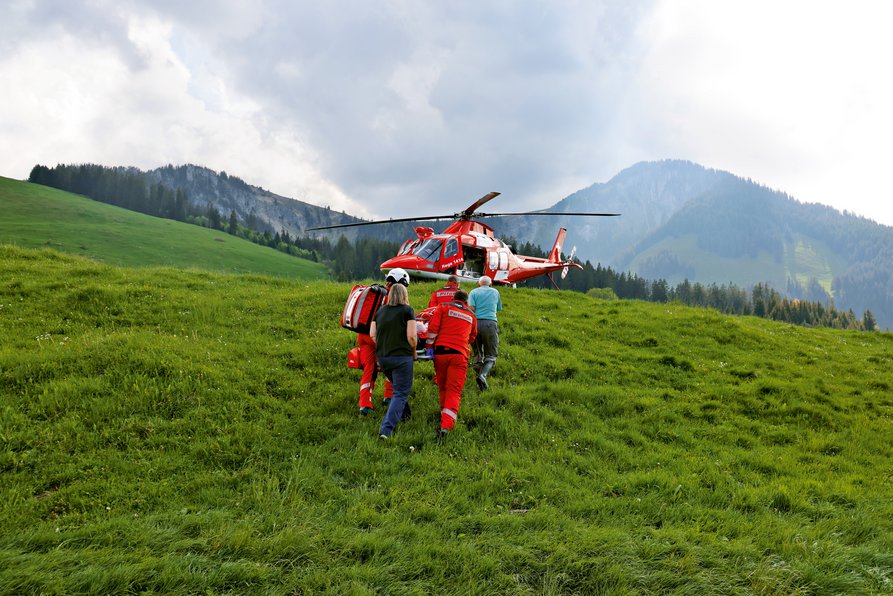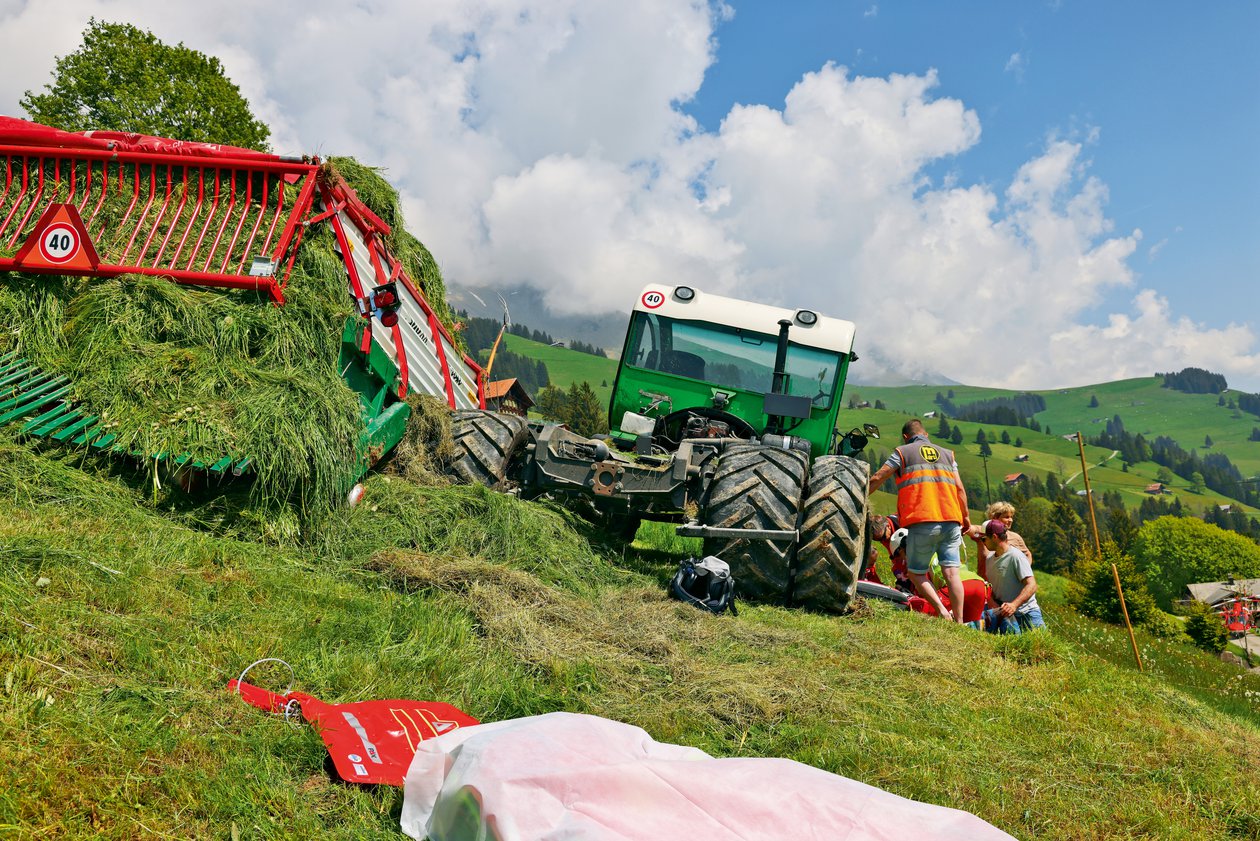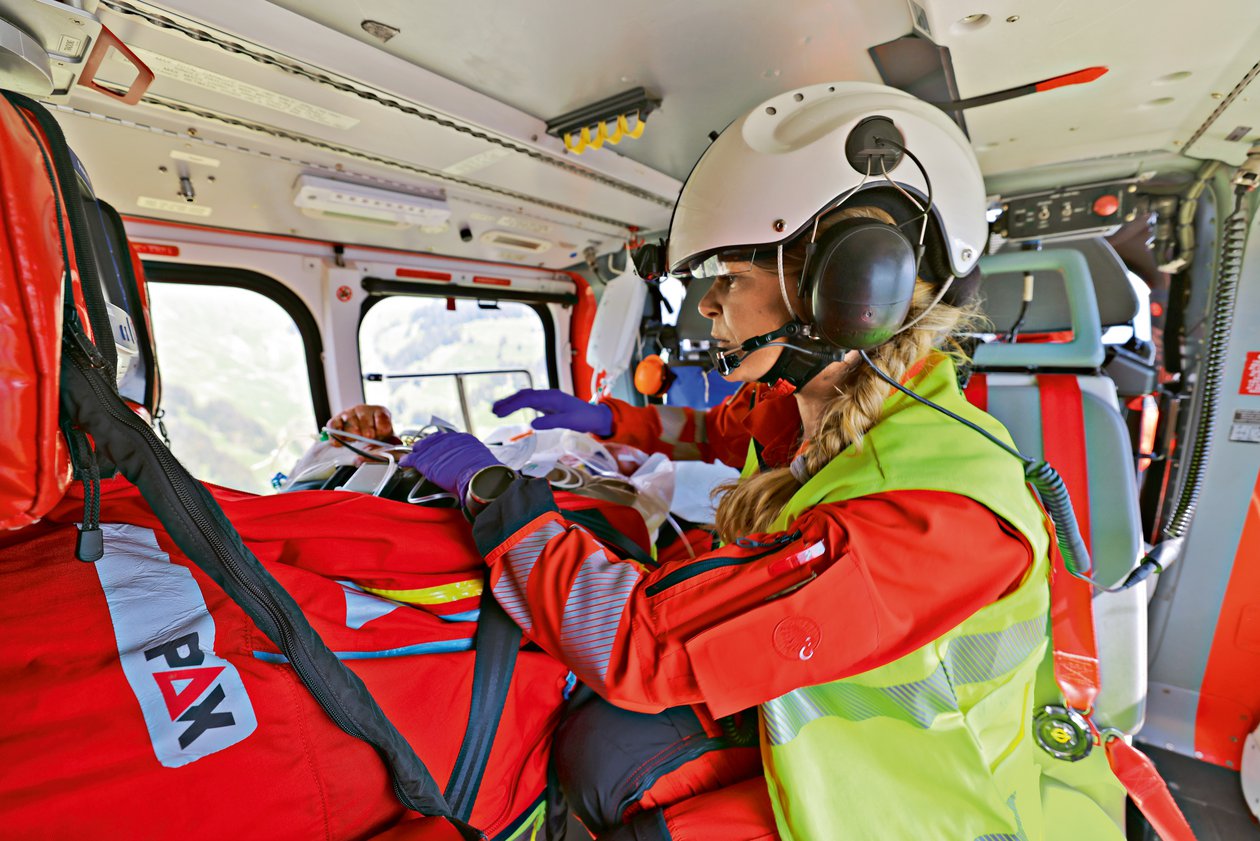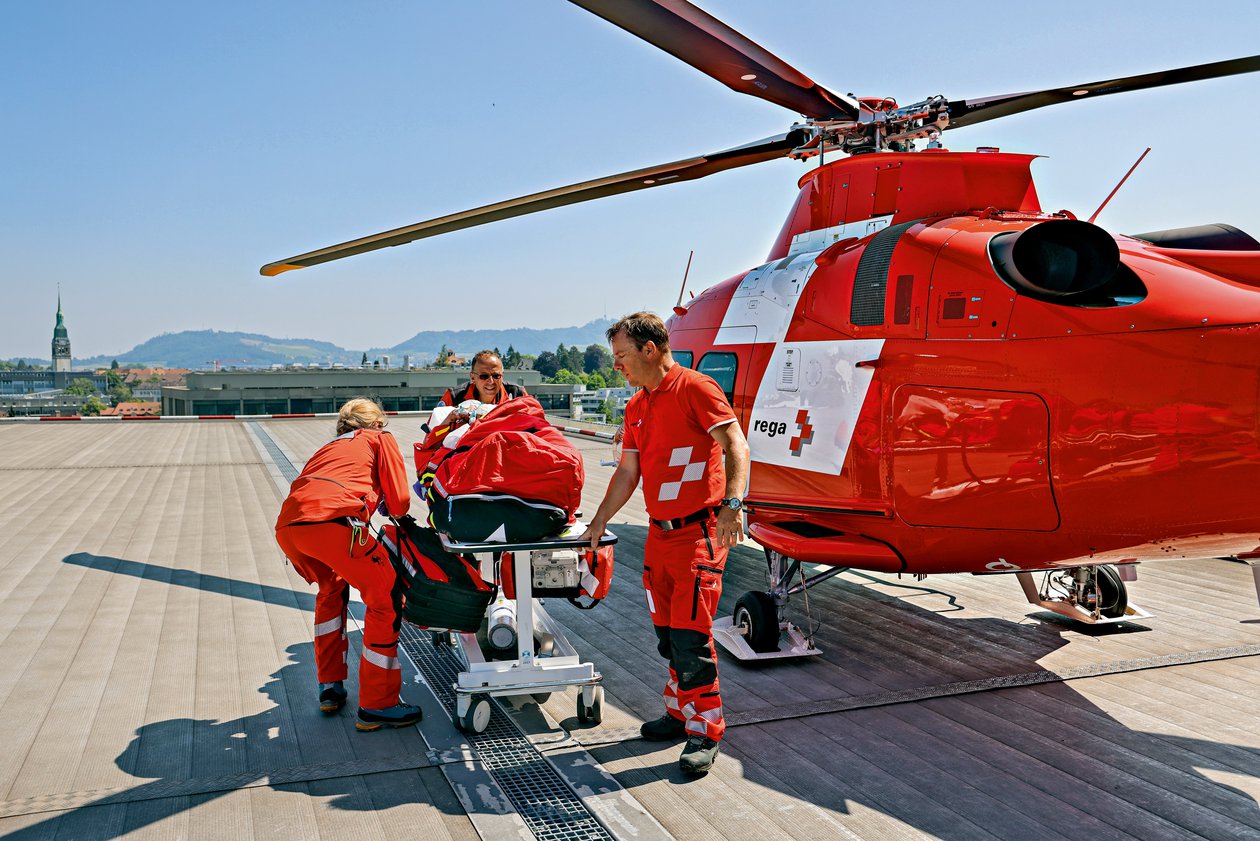Short flight to the Inselspital
While Rega 14 takes off, flies around the Niesen mountain and follows the River Aare towards the Inselspital, the Rega Operations Center at Zurich Airport takes care of all the registration formalities for the patient at the hospital. The route from Frutigen to Bern is quickly covered by the helicopter. Barely 20 minutes later, the helicopter lands on the roof of the Inselspital. The crew take Samuel Schmid to the shock room and hand him over to the medical specialists, who are now responsible for his care. The farewell is brief: “Bye everyone, take care!” Rega 14 takes off and flies back to the base. In the cabin, Jacqueline Leitl is relieved: “Fortunately his condition didn’t get worse. Things could have turned out very differently.”
Evacuation with the rescue hoist
No sooner has the helicopter landed than the next alarm call comes in at 12.30 pm. A young man has taken a tumble at the Wiriehorn bike park and broken his collarbone. It is not possible to land directly next to the patient, so Jacqueline Leitl and Peter Lempen exit the helicopter while it is hovering just above the ground and Adrian von Siebenthal then lands the Da Vinci a short distance away. The biker describes how the accident happened. “I tried to ride around a fence gate because I didn’t want to scratch my new bike. Unfortunately, that idea misfired,” he says ruefully. Jacqueline Leitl administers a painkiller and takes him to the helicopter. The young man is flown to Thun Hospital, after which the crew return to the base. There, everyone goes about their duties once more: the paramedic refuels the helicopter, the emergency physician replenishes the medical supplies, and the pilot records the details of the mission on the computer. Then it is time for lunch: sausage and salad.
At 3.55 pm, the alarm beeps again. Fog and a belt of snow near the Tschentenalp make it impossible for a couple to ascend or descend. Adrian von Siebenthal checks the location on the map. “The terrain is very steep,” he says. “Evacuation will be difficult, so we’ll need to take a rescue specialist with us.” He informs the Operations Center. After a few minutes, the flight coordinator radios in: “You can pick up Franz Baumgartner”. Rega 14 flies to the home of the helicopter rescue specialist from the Swiss Alpine Club SAC and he climbs aboard. The helicopter continues on its way to the stranded couple in the mountains. As it is impossible to land directly next to them, Adrian von Siebenthal looks for a temporary landing site nearby, where emergency flight physician Jacqueline Leitl disembarks. The pilot, paramedic and helicopter rescue specialist remain in the helicopter and subsequently evacuate one person after the other on the rescue hoist. They are set down beside the emergency flight physician with pinpoint accuracy. As both are uninjured, they are able to make their way back down into the valley on their own.



